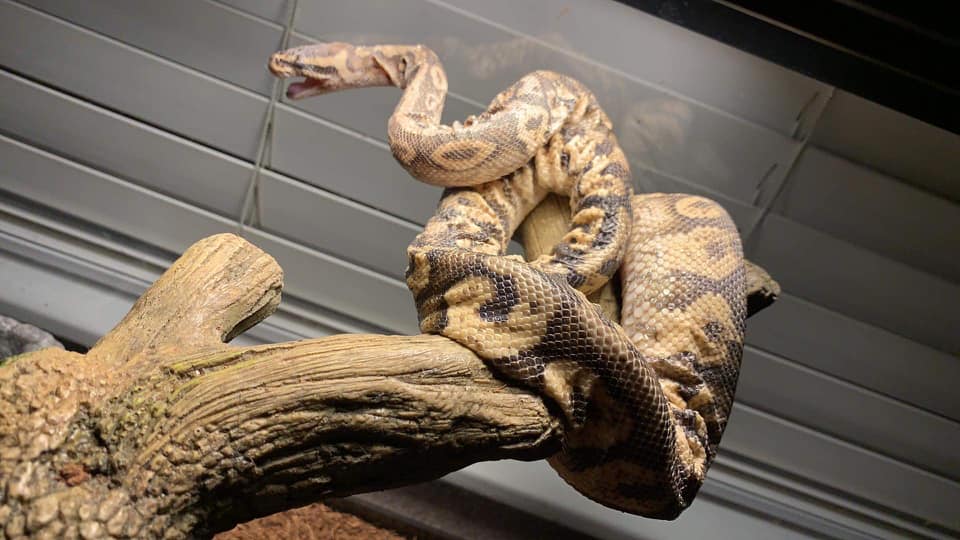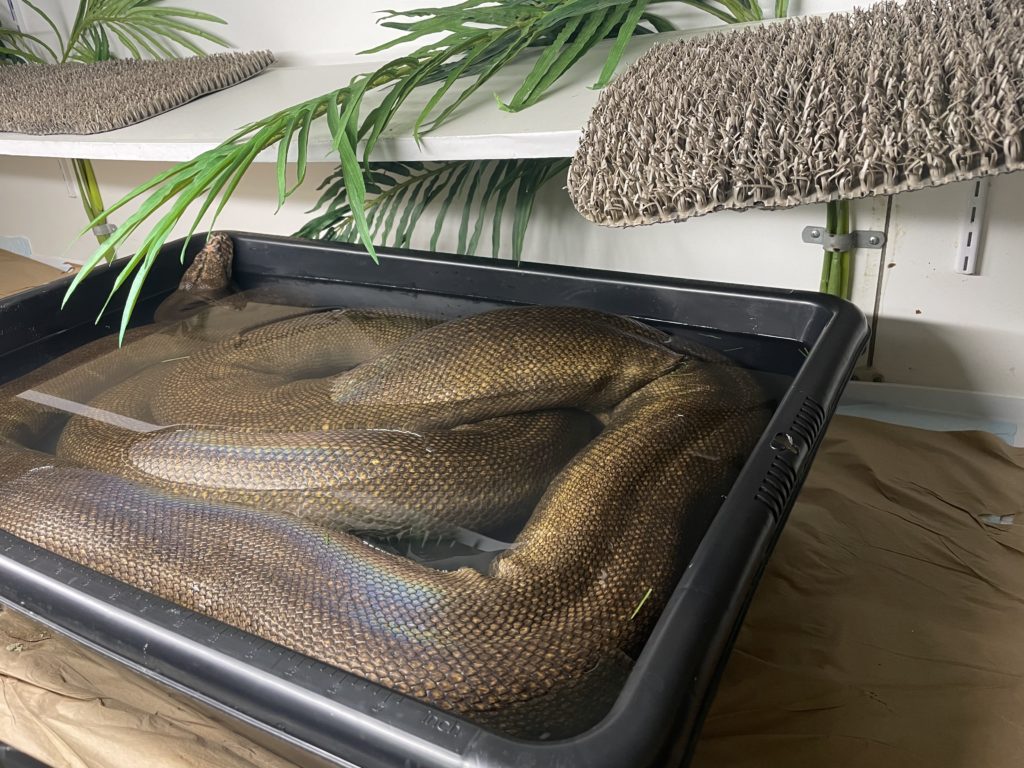Most of our surrenders that come here due to illness have dehydration as one of their most significant problems. On the opposite ends of the humidity spectrum is scale rot. Let’s talk about how to prevent these extremes. It’s really not as hard as you think!
Controlling humidity and heat is probably the most important balancing act you need to learn in order to keep your snake healthy.
Heat rises. If you have too many air gaps at the top of your enclosure the water vapor in the air will escape out the top. If you add more air gaps because you have too much water vapor in the air then you start to also lose your heat. Or the opposite is when using a cage with TOO MUCH airflow such as a screen top and you end up needing to add more water to the substrate to keep humidity levels high. That doesn’t work either and creates results like this in the picture below.

This picture is heart breaking. The surprising truth is that this little girl was greatly improved after nothing more than a couple of days of warm water bathes. This is what a screen top aquarium has the potential to cause – severe dehydration.
Let’s keep humidity very simple by remembering that all you need is water to evaporate inside your enclosure at a rate that keeps the humidity in the correct range. However, do not sacrifice your animal’s air temperature in order to correct for humidity.
We achieve the correct balance by placing our snake’s water dish on top of their belly heat. That causes the water to evaporate into the air. The size of enclosure, types of heaters, and surface area of your water dish will all influence you humidity level.
When you first set up your enclosure, place the water dish at the center and then watch to see what your humidity does over the next 24 hours. If it does not get high enough, move the water closer to the hot side. If it gets too high, move the water closer to the cold side. Its really that simple.
Many snakes will bathe themselves in their water dish just before a shed. They will also soak themselves in water if needed for certain health problems. Here you can see Mara, a very large retic, bathing herself while in blue. That’s a BIG water dish!

You should always allow your snake access to a water dish large enough to bathe in and change out that water weekly to keep it clean. They also need clean drinking water available at all times. This video shows Fable getting a drink of water from a dish on the floor in the Snake Haus python room. It is a bit unusual for a snake to be this comfortable. Stopping to drink like this while out in the open tells us how comfortable Fable is in this environment. Most snakes will prefer to drink in private inside the safety of their enclosure.
Some are a bit picky about their water temperature however.
If you have a snake that prefers their water to be warmer, you can adjust this balance by moving the water dish closer to the hot side but adding a lid with small entrance hole. That lid will reduce how much water evaporates into the air.
Scale rot is caused by substrate that is too wet. This is a common mistake. Many people think wetting down their substrate is the correct way to maintain proper humidity. Unfortunately a snake sitting in wet substrate all the time will develop sores on their skin from the dampness. This is especially bad if the substrate has any urine or fecal material in it. Instead of keeping your substrate wet you need to reduce the amount of air flow so you stop losing so much water vapor from the enclosure. This is also why we prefer to use paper for substrate – it’s much easier to keep clean and we do not need the substrate to hold moisture for us.

